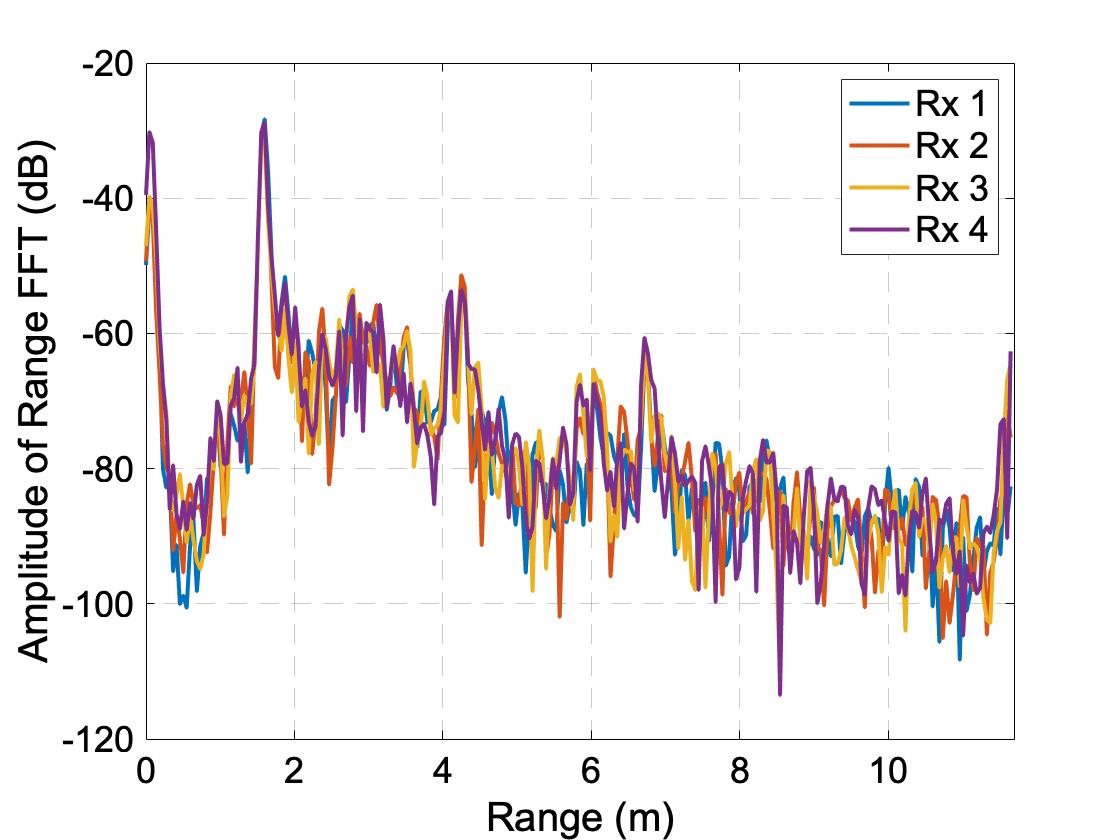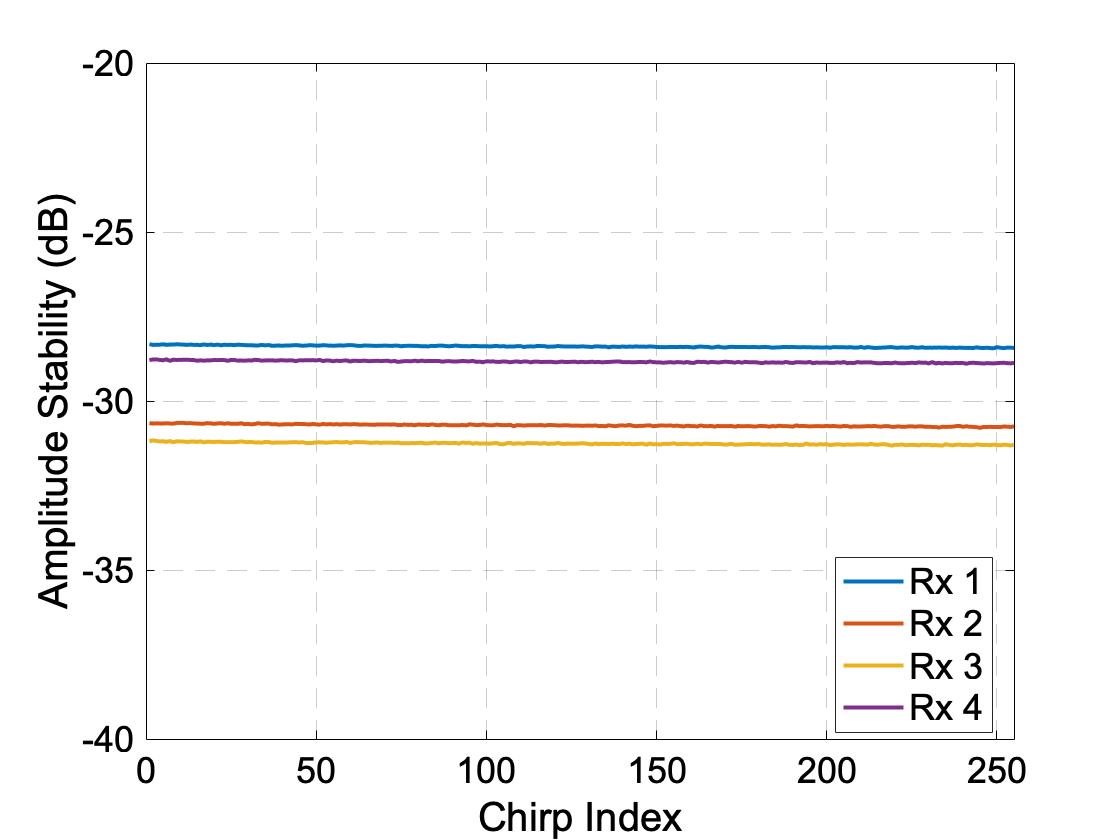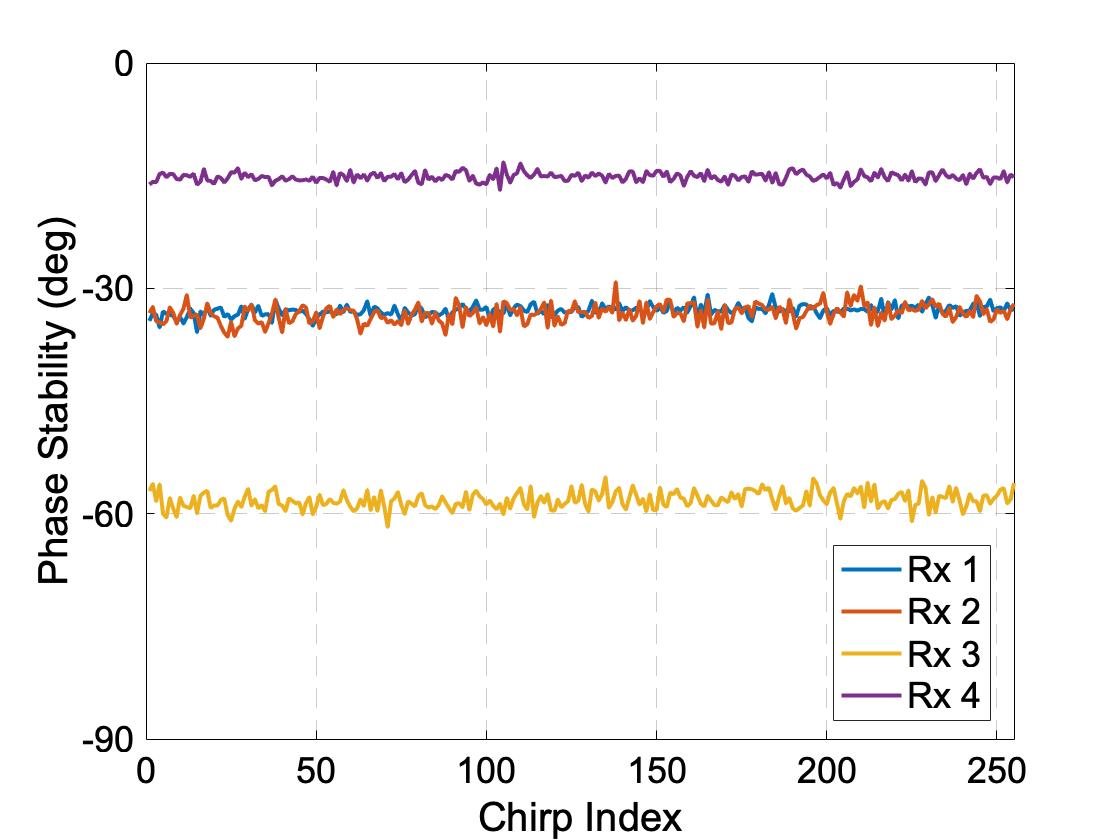Other Parts Discussed in Thread: IWR1443,
Hi,
I have been using the IWR1443 BOOST with the DCA1000 data capture board. I was able to obtain the raw ADC samples (both I and Q) using the mmwave studio. When I was looking at the data post processing results, I notice that there is a phase offset between the phase stability plots. In a stable environment, the phase stability for each channel is a relatively flat curve, but the 4 such curves from the 4 Rx channel in the same run are "offset" by a constant phase value, and this phase value seems to change everything the device is re-booted/power-cycled.
If I would like to process the IQ data offline to get other information - for example the angle of arrival (AoA) of the reflector - how should I calibrate out this offset when performing the angle-FFT across the Rx antennas? Also, are there any reference doc/code that explains how the AoA in the mmwave studio postproc tab is obtained from the raw IQ binary data?
Thank you very much,
TC




